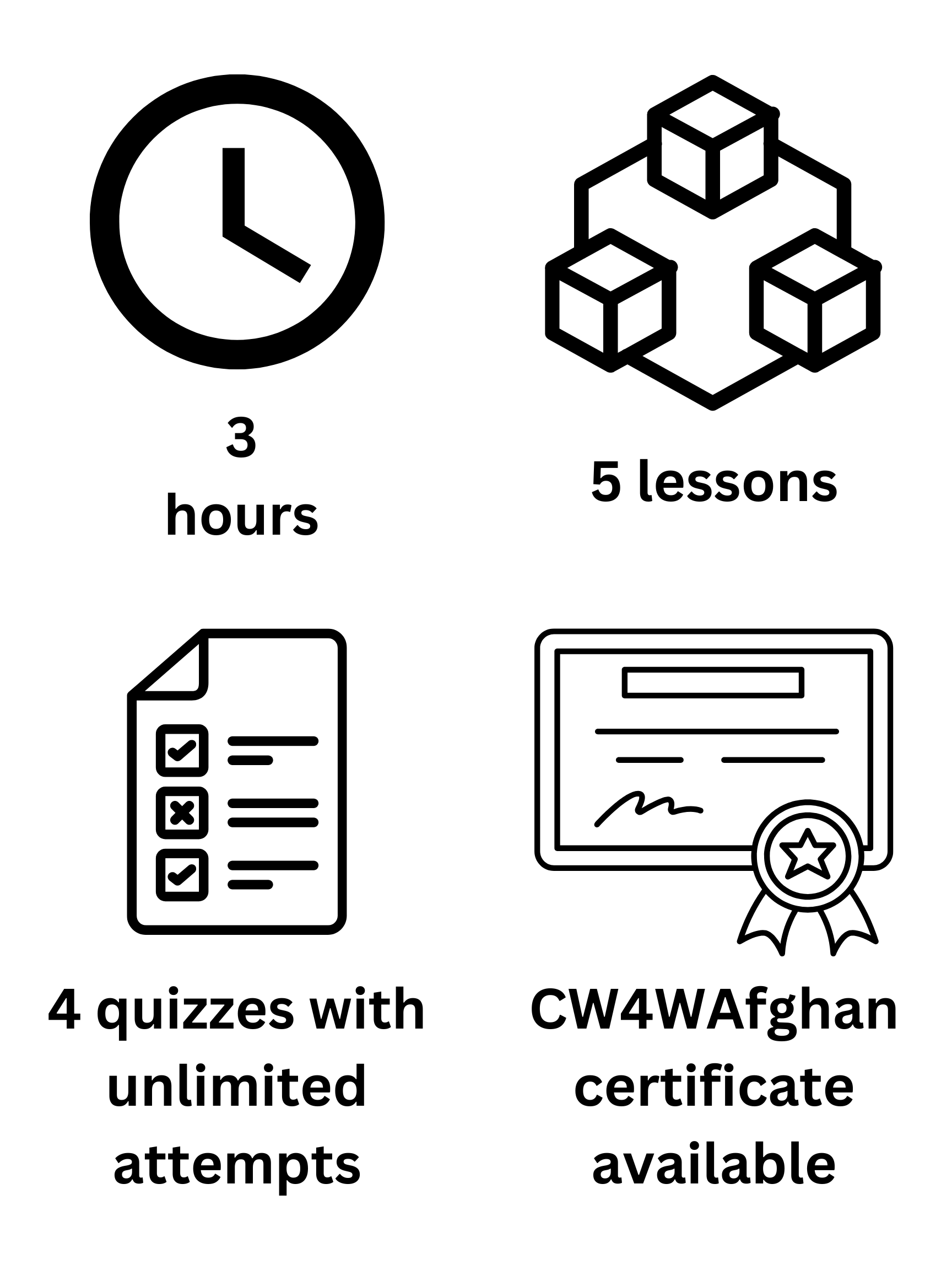Topic outline
-
Introduction
Welcome to CW4WA’s How to Teach Online: Building Relationships. The course has five units. Each unit will include readings, activities and journal entries to complete. Units 1-4 have specific focus areas. The readings and activities connect to building learning relationships with your students.
Learning Outcomes
- Learn how to create safe and inclusive online learning spaces.
- Determine good communication strategies to form learning relationships and make course expectations clear.
- Using the Community of Inquiry Framework, evaluate how teaching presence supports student learning.

How it works
- This course consists of information for you to read, view, or listen to, as well as practice exercises and assignments, to help you learn about the topic.
- When you are finished with all the content on each page, click the arrow on the bottom right corner to move to the next page.
- There is a progress bar at the bottom that will show your progress through the course.
- When you have completed the course, you will have the option to generate a certificate of completion for download.

-
-
In Unit 1 we learned about developing relationships when teaching online. We introduced the Community of Inquiry. We encouraged you to think about social, teaching and cognitive presence when teaching online.
In this unit, you will learn how to make your course inclusive. Sometimes, as educators, we teach the way we were taught. We teach because we were passionate about our education experience. We found learning easy. However, many educators learned in a more traditional education system. The expectation was that learners sit and listen. Those students who “got it” succeeded. Those who did not “get it” fell behind and dropped out.
We must stop only giving educational opportunities to students who “got it”. We must change how we design online courses. Creating learning opportunities for all students is referred to as increasing “access”. It involves including as many students as possible. These are inclusive learning environments.
This course gives you strategies to help all students learn. Think about the learner. Consider why they are struggling. Think about ways to help them. Think about your own experiences as a learner. Have empathy for those who do not learn the way you do. The more you are able to think about learning differently, the more students will find success in your courses.
Unit 2: Learning Outcomes
- U2:A. Identify how online learning can be accessible for all learners.
- U2:B. Determine how to personalize resources for learners.
- U2:C. Using Universal Design for Learning (UDL), evaluate how to design for inclusive online learning.
-
In Unit 2 we considered how to design accessible online learning for all learners. We focused on Universal Design for Learning. UDL prioritizes student engagement, representation and action and expression.
In Unit 3 we will focus on authentic assessment. To assess students in relevant and meaningful ways, you need authentic learning tasks. These are authentic learning activities.
Assessment is not just summative, done at the end of the week, unit or year. Instead, there are constant check-ins by the teacher. The check-ins and feedback are called formative assessment. This is a top practice for student learning success (Hattie, 2012).
Unit 3: Learning Outcomes.
- U3:A. Describe authentic assessments in online learning.
- U3:B. Determine effective formative assessment strategies. Connect them to specific subjects.
- U3:C. Identify types of assessment.
- Evaluate which forms of assessment are most effective for authentic learning.
-
Unit 4: Introduction
In previous units, we focused on how you can design for learning to engage your students. But every learner is different. There is always a student who will struggle to connect with you as a teacher. The reality of teaching online is that we never feel like we are able to meet the needs of all students. To persevere requires hope and thinking beyond the moment.
Unit 4: Learning Outcomes
- U4:A Apply Bloom’s Taxonomy to activities and different learning contexts.
- U4:B Consider effective online group activities for tasks and assessment.
- U4:C Identify how to adapt your lesson plans to support learners who need additional help.
You may feel overwhelmed by the expectations of you as an online teacher. Think to yourself, “I may not be able to do this yet, BUT I will be able to do it someday”. The mindset shift of “not-yetness” is known as a Growth Mindset. This will promote resilience and perseverance.
-
Unit 5: Introduction.
Throughout the course you have seen a variety of ways to encourage student-centered learning online.
Unit 1: Learning Outcomes.
- U1:A. Learn how to create safe and inclusive online learning spaces.
- U1:B. Determine good communication strategies to form learning relationships and make course expectations clear.
- U1:C. Using the Community of Inquiry Framework, evaluate how teaching presence supports student learning.
Unit 2: Learning Outcomes.
- U2:A. Identify how online learning can be accessible for all learners.
- U2:B. Determine how to personalize resources for learners.
- U2:C. Using Universal Design for Learning (UDL), evaluate how to design for inclusive online learning.
Unit 3: Learning Outcomes.
- U3:A. Describe authentic assessments in online learning.
- U3:B. Determine effective formative assessment strategies. Connect them to specific subjects.
- U3:C. Identify types of assessment.
- Evaluate which forms of assessment are most effective for authentic learning.
Unit 4: Learning Outcomes.
- U4:A. Apply Bloom’s Taxonomy to activities and different learning contexts.
- U4:B. Consider effective online group activities for tasks and assessment.
- U4:C. Identify how to adapt your lesson plans to support learners who need additional help.
Unit 5: Learning Outcomes.
- U5:A. Apply the principles discussed in the course to lesson design.
-
-
